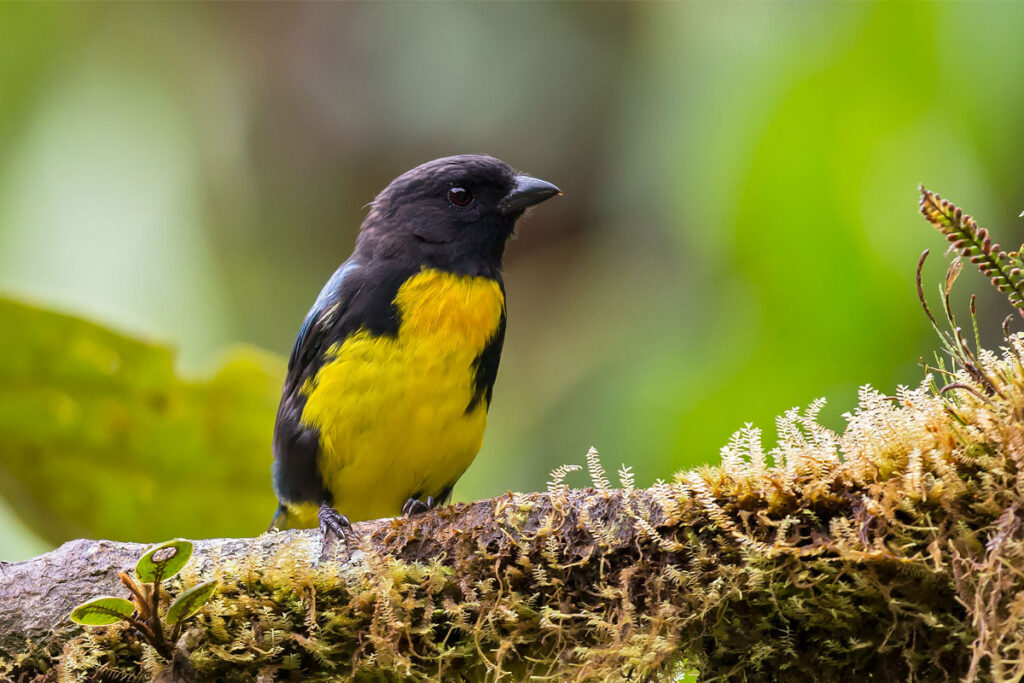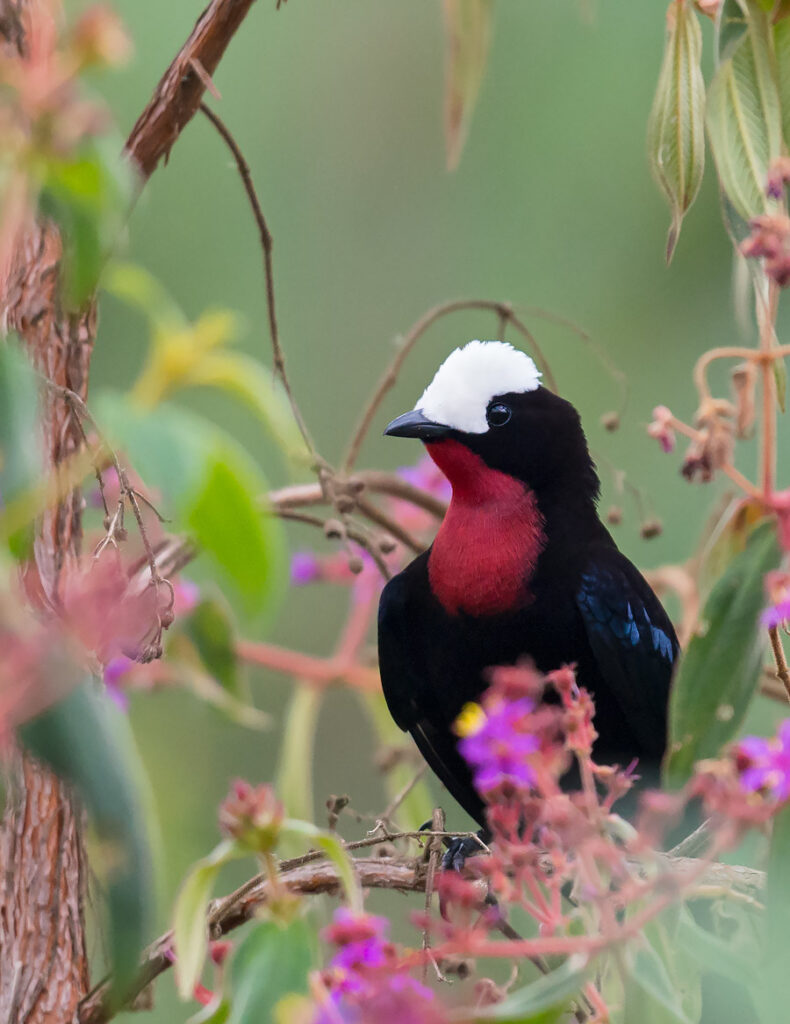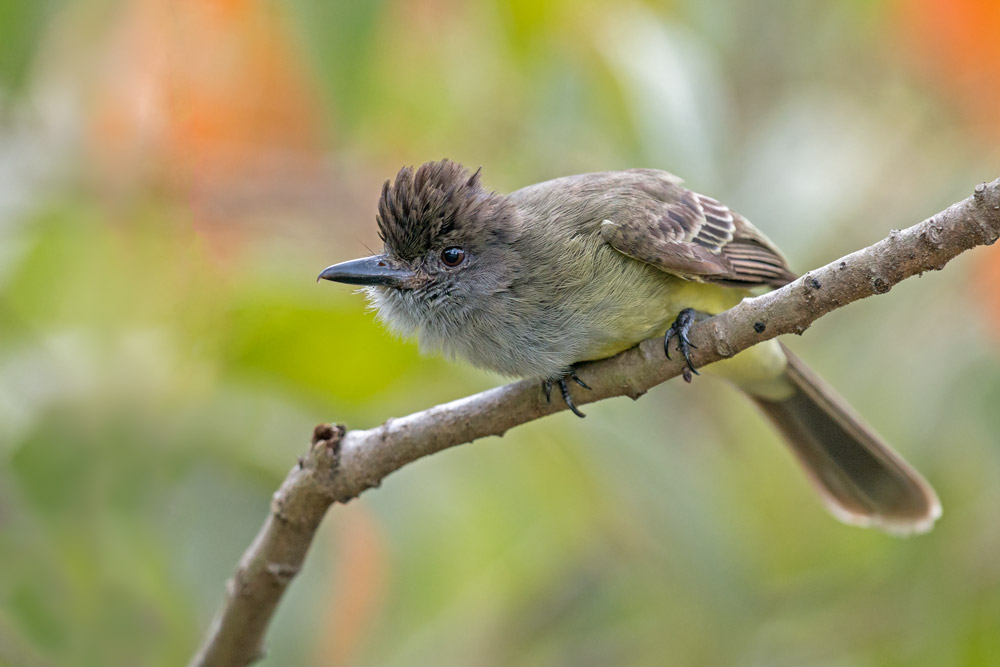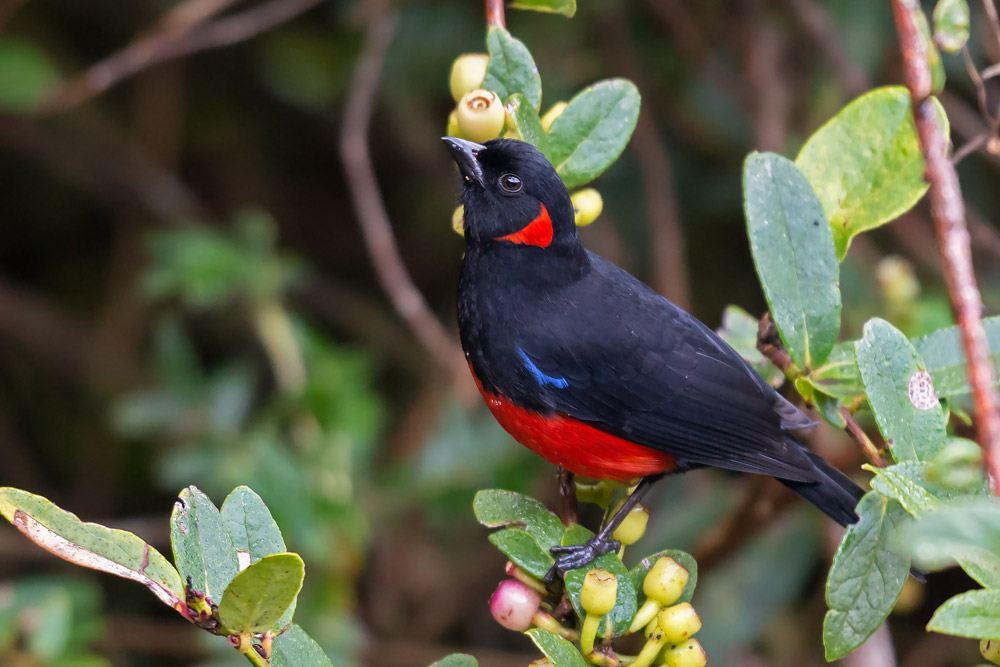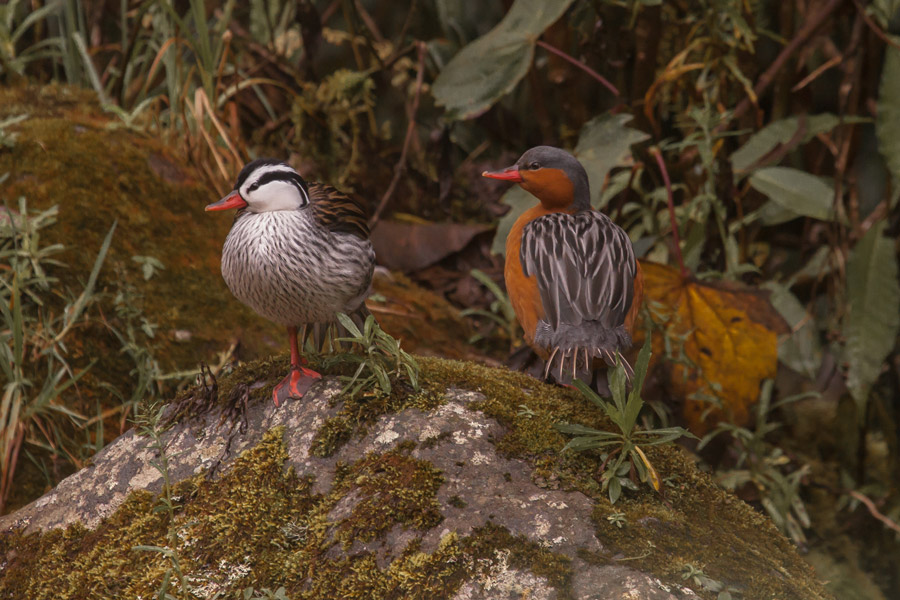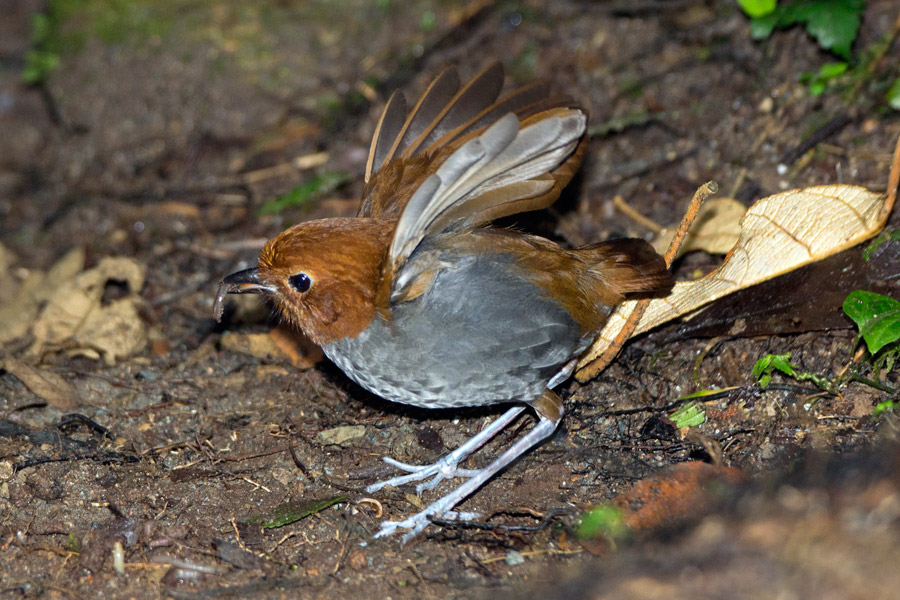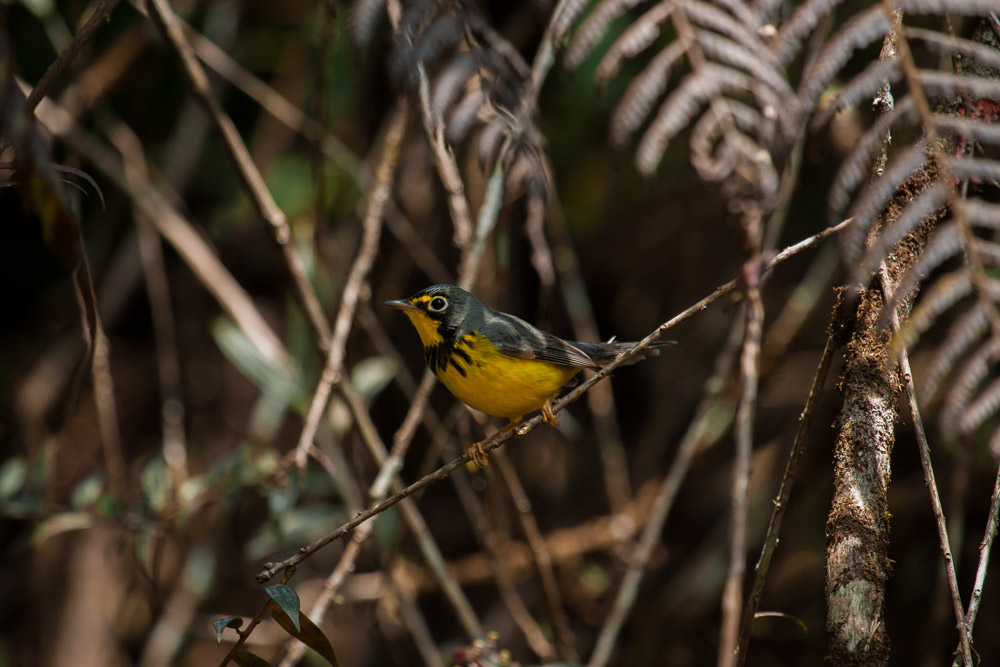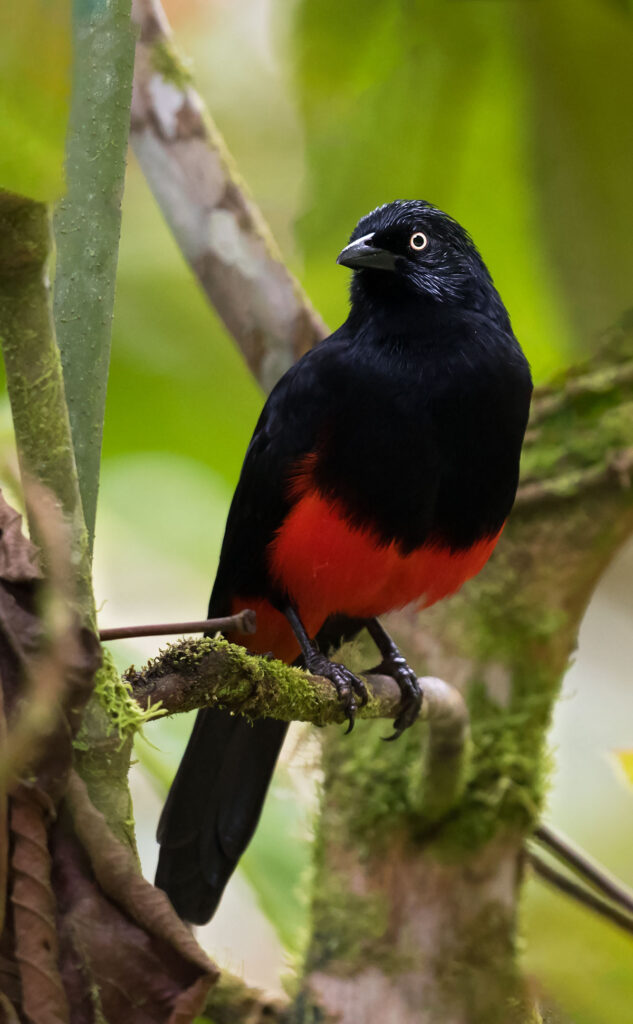This route focuses on the coffee growing region of the western and central Andes, where more than a quarter of the country’s endemics can be found. The central Andean region is dominated by glaciated volcanoes that reach heights of over 5,000 m (16,500 ft), providing an ample gradient in terms of altitude that provide for amazing birding. The area is home to one of Colombia’s largest national parks, as well as several well-managed private reserves with convenient access from major cities. In the northern portion of the western Andes, the best birding is done at the higher elevations and on the Pacific slope, where there is still good forest cover.
Best Months to Visit:
Late November to late March and late June to early September.
Connecting Routes:
Easily by land with the Western Andes and Cauca Valley route and with Eastern Andes and Magdalena Valley Route. Easily by air with any of our other Colombia routes.
AREAS IN THIS ROUTE
At the edge of the Tatama National Park is the Montezuma Lodge, which offers unsurpassed hospitality, magnificent feeders, and birding right from the lodge. On the Pacific slope of the western Andes, in the Choco Bioregion, the birding is done along a 13 km (8 m) road of pristine forest that covers a 1,400 m (4,600 ft)gradient. Of the more than 480 species that have been recorded on the road, 11 are endemic and more than 35 are near endemic. At least two full days of birding are required to fully enjoy this diversity hot spot.
Targets Upper Portion:
Munchique Wood-wren (E), Chestnut-bellied Flowerpiercer (E), Tatama Tapaculo (E), Gold-ringed Tanager, Yellow-breasted Antpitta (NE), Orange-breasted Fruiteater (NE), Tanager Finch (NE), White-faced Nunbird, Chestnut-breasted Chlorophonia, Yellow-collared Chlorophonia, Ocellated Tapaculo.
Targets Lower Portion:
Black-and-gold Tanager (E), Parker’s Antbird (E), Nariño Tapaculo (E), Choco Vireo (E), Empress Brilliant (NE), Toucan Barbet (NE), Bar-crested Anthrike (NE), Beautiful Jay (NE), Purple-throated Woodstar (NE), Black Solitaire (NE), Violet-tailed Sylph, White-tailed Hillstar, Purple-bibbed Whitetip, Spillman’s Tapaculo, Streak-capped Treehunter, Linnetaed Foliage-gleaner, Olivaceous Piha, Blackish Rail.
This is the best area to search for the endemic Yellow-eared Parrot, a little-known species that is severely threatened due to the disappearance of the wax palms, where they roost and nest. Wax palms are the national tree of Colombia, and is also an endangered species. A project which started in 1998 led to the creation of Proaves, an NGO that has purchased large tracts of land for conservation. Nearby is Jardin, a very picturesque town and home to a very active Andean Cock-of-the-rock lek where at times more than 20 males arrive to display. Biridng is done along the road to Las Ventanas, where close to 400 species have been recorded.
Targets:
Yellow-eared Parrot (E), Parker’s Antbird (E),, Red-bellied Grackle (E), Dusky Starfrontlet (E), Yellow-breasted Antpitta (NE), Tanager Finch (NE), White-capped Tanager, Chestnut-crested Cotinga, Torrent Duck, Ocellated Tapaculo, Barred Fruiteater, Streak-throated Bush-Tyrant, Rufous-headed Pygmy-Tyrant, Handsome Flycatcher, Rufous Antpitta.
Bolombolo is a small town along the Cauca River, surrounded by tropical dry forest, one of the most endangered ecosystems on the planet. The forests are not very extensive, so birding is usually done by making a quick stop en-route to Jardin or Medellin.
Targets:
Antioquia Wren (E), Grayish Piculet (E), Apical Flycather (E), King Vulture.
Covering 600 square km in the highest part of the Colombian central Andes, the park is home to volcano Nevado del Ruiz (5,300 m) as well as seven other volcanoes. Birding is done in the Paramo ecosystem, consisting of tropical grasslands above treeline, much like a moorland. The scenery in the Paramo is magical and surreal, with interesting species that have adapted to the harsh conditions at the high elevations. An added bonus after a long day of birding are the mineral-rich hot springs at the hotel. The park is easily accessed from the city of Manizales.
Targets:
Buffy Helmetcrest (E), Rufous-fronted Parakeet (E), Black-backed Bush-Tanager (NE), Rainbow-bearded Thornbill (NE), Crescent-faced Antpitta (NE), Tawny Antpitta, Paramo Tapaculo, Gray-breasted Mountain-toucan, Viridian Metaltail, Stout-billed Cinclodes, Brown-backed Chat-Tyrant, Golden-crowned Tanager, Glossy Flowerpiercer, Plumbeous Sierra-Finch, Paramo aSeedeater, Many-striped Canastero, Black-chested Buzzard-Eagle, Andean Tit-Spinetail, White-chinned Thistletail, Pale-naped Brush-Finch.
Otun-Quimbaya NP is a flora and fauna sanctuary that was created in 1996 to create a buffer zone between the city of Pereira and Los Nevados NP. The reserve is managed by a local community organization called Yarumo Blanco, who do a magnificent job of taking care of their guests as well as the surrounding cloud forest. The site is conveniently located near the city of Pereira.
Targets:
Cauca Guan (E), Colombian Screech-owl (E), Chestnut Wood-Quail (E), Stiles’s Tapaculo (E), Multicolored Tanager (E), Hooded Antpitta (NE), Moustached Antpitta (NE), Speckle-faced Parrot, Wattled Guan, Golden-plumed Parakeet, Red-ruffed Fruitcrow, Rufous-breasted Flycatcher (NE), Torrent Duck.
The Rio Blanco Reserve is an IBA that is owned by Aguas de Manizales, the local water company for the nearby city of Manizales. The reserve is home to more than 450 species and is considered to be one of the top five birding sites on the planet. New lodging facilities have been completed and there are plans from more, although staying in the Manizales is also an option as driving to the reserve takes only twenty minutes.
Targets:
Brown-banded Antpitta (E), Bicolored Antpitta (E), Chestnut-crowned Antpitta, Chestnut-naped Antpitta, Slate-crowned Antpitta, Masked Saltator, White-capped Tanager, Powerful Woodpecker, Crimson-manted Woodpecker, Stripe-headed Brush-Finch, Rusty-faced Parrot, Golden-plumed Parakeet, Tyrannine Woodcreeper, Golden-fronted Whitestart, Plushcap, Dusky Piha, Lachrymose Mountain-tanager, Grass-green Tanager, Red-hooded Tanager, Ocellated Tapaculo, Blackish Tapaculo, Wedge-billed Hummingbird, Purple-backed Thornbill, Rufous-banded Owl, Stygian Owl.
The reserve is owned and managed by the NGO Proaves, and was created to protect critical habitat for the recently described Chestnut-capped Piha, the namesake of the reserve. The diversity is outstanding, with over 480 species.
Targets:
Chestnut-capped Piha (E), Multicolored Tanager (E), Stile’s Tapaculo (E), Parker’s Antbird (E), Colombian Chachalaca (E), Ochre-breasted Antpitta, Golden-headed Quetzal, Red-bellied Grackle (E), Black-and-gold Tanager (E), Bicolored Antvireo (NE), Indigo Flowerpiercer (NE), Purplish-mantled Tanager (NE), Lanceolated Monklet, Cerulean Warbler, Mottled Owl, Green-fronted Lancebill.
La Romera is a municipal park whose proximity to the city of Medellin makes it very convenient for birding. The park is small but a morning of birding can be easily devoted to the secondary forest that harbors some interesting species.
Targets:
Red-bellied Grackle (E), Colombian Chachalaca (E), Stile’s Tapaculo, Yellow-headed Manakin (NE), Black-billed Peppershrike, Rufous-naped Greenlet, Pale-naped Brush-finch, Greenish Puffleg.
CONTACT US
SEND US A MESSAGE
CONTACT INFORMATION
For more information, questions, availability or to register for a Colombia Birdwatch tour, please contact Christopher Calonje at:


